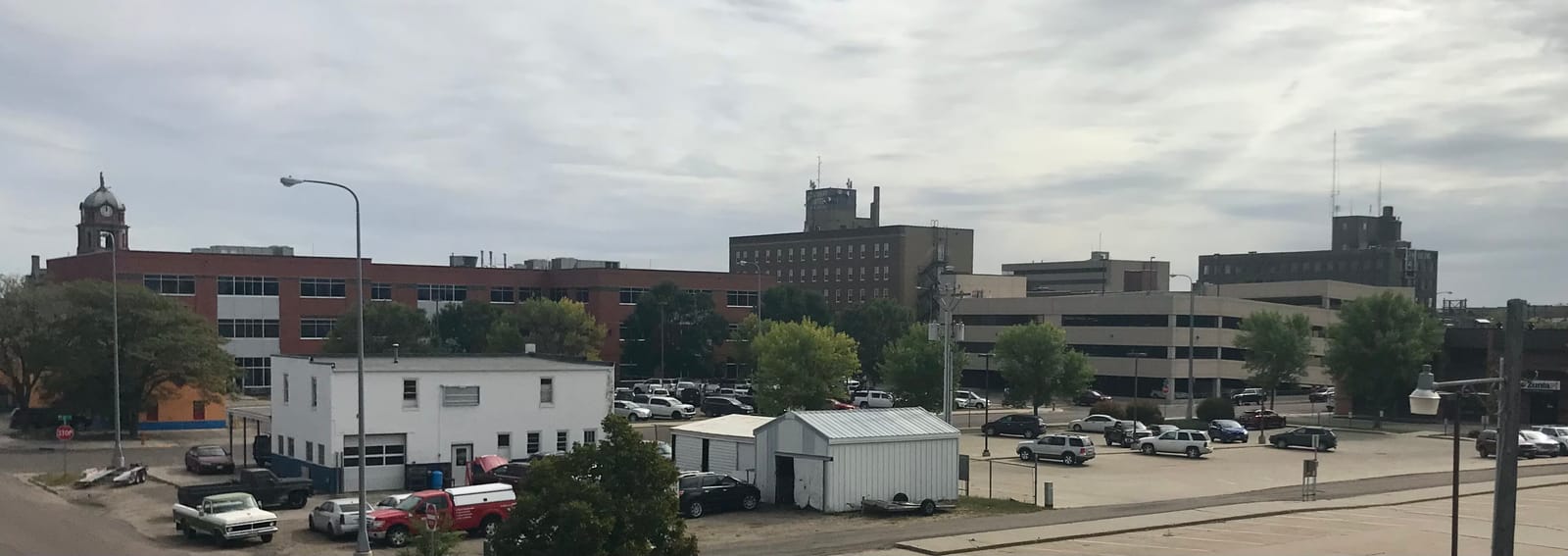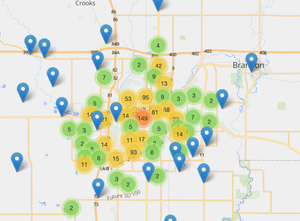Melissa Avelino is a data journalism student at Augustana University. In this first of a five-part series, she looks at the changing face of South Dakota using U.S. Census Data.
South Dakota's rural areas have seen a net loss of population over the past three decades, though many of those people who left for cities like Sioux Falls and Rapid City also return to the small towns where they grew up, according to demographic trends.
South Dakota still has more than half its population living in rural areas. However, the U.S. Census Bureau has noticed a migration cycle of South Dakotans over the years.
Ben Winchester, a rural sociologist at the University of Minnesota Extension Department of Community Development, said the narrative that has been painted over the years is that most rural areas are dying.
That doesn't tell the full story, Winchester said.
Rural population trends are more of a cycle, according to his research as well as work done on a South Dakota newcomer survey by Kara Harders, the community vitality field specialist for SDSU Extension in Brookings.
"The motivations behind someone returning are very different than them starting all over," said Harders. "They go to college, go live life, and then get married, have kids and come back to take a slower pace of life."
Winchester said it is important to understand that when the population goes down, people are moving in and out. The movers out of rural communities are not only from the 18- to 25-year-old population but also older people who need medical services at regional centers, he said.
The recent decrease in the rural population is largely because the average household size has gotten smaller in those areas over the past 20 years, Winchester said.
"Our population goes down because of the slow trickle of death," he said. "It literally is like you might have two older people in the household and one of them passes away, while the surviving spouse stays in that house."
Join other South Dakotans and support statewide storytelling.
A factor that also influences this population's decline in population and household size is referred to as the term "brain gain."
"Rural areas have not been dying. They grew, we were flooded with people in the '90s," Winchester said. "There was a brain gain of people in the '70s, '80s and '90s that filled up almost every vacant home."
The gain happens when high school kids from rural areas move out after graduation to pursue college, a job or military service in urban areas, he said.
"We are not trying to keep our high school kids. We are attracted to 30-, 40- and 50-year-olds," he said. "These people have been moving in for the past 50 years, diversifying the economy and bringing leadership to positions."
One family's journey
That is what the Weber family has been going through since 2014, when the oldest sibling, Brianna Easton, moved from Aberdeen to Brookings to attend South Dakota State University.
She got a job right after graduation in Sturgis but moved to Rapid City seven years ago. Easton used to commute to Sturgis every day, until she got a job in her new city.
After graduating from Northern State University in Aberdeen, her younger brother, Matthew Weber, also moved and found a job in Sioux Falls.
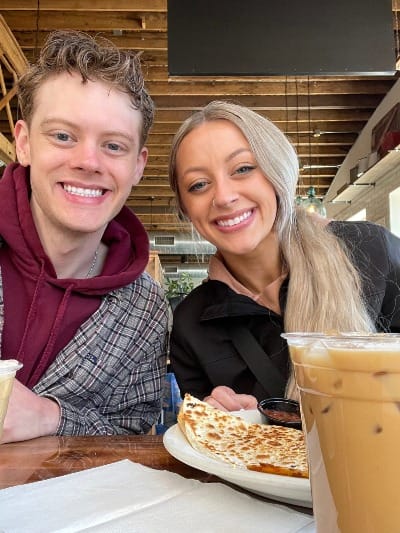
"I was like, I kind of want to live somewhere different than Aberdeen," he said. "Because at that point, I've only lived in Aberdeen."
For different reasons, such as more job opportunities or trying new environments, both siblings now call Rapid City and Sioux Falls home.
The data
According to the most recent estimate from the U.S. Census Bureau, South Dakota's population was 924,669 in July 2024, an increase of 4.3% since 2020.
South Dakota's two defined metro areas of Sioux Falls and Rapid City demonstrate expressive growth over the years and now represent roughly half the state's population, while smaller cities and towns in non-metro areas have a slower growth pace and make up the other half of South Dakotans.
To better visualize where these people are moving in or moving out, the following map tracks each ZIP code's population trends based on the U.S. Census Bureau data since 2000.
To search and better visualize the trends in your ZIP code, city or county, the following searchable table represents the numbers in charts.
The following graph compares population trends across South Dakota since 2000.
Top takeaways
Here are top takeaways from the data, with analysis and quotes from Census experts and others.
Rural areas continue aging
Another major factor in South Dakota's net loss of population in rural areas is the large number of older residents, said Weiwei Zhang, an associate professor at SDSU expert in demographics.
When compared to South Dakota's metro areas, its non-metro region features a larger share of population 65 years old and older, she said.
That group increased from 16.2% of the state's population in 2013 to 19% in 2023. At the same time, the number of people 25 and younger in those areas fell from 35.3% in 2013 to 34.5% in 2023.
Zhang said the key reasons why people are leaving rural areas can vary by case but are usually related to opportunities for jobs, education, access to services and resources.
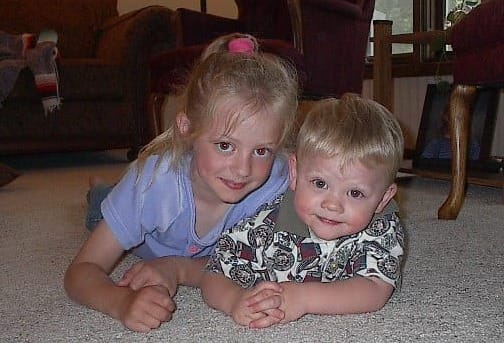
For Benita Weber, she always figured that her daughter, Brianna, would move at some point, but she was not sure about Matthew until he started college, and she realized that maybe Aberdeen was not for him.
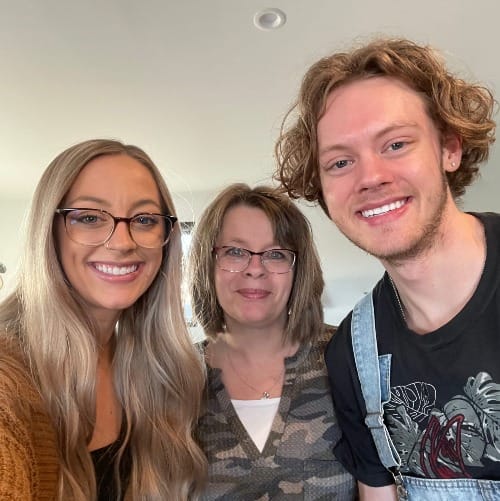
"I don't know if there are a lot of job opportunities for him here, which there weren't when he graduated," said Benita Weber. "As a mom, you just want them to go where they are going to be happy and have an opportunity to get a job out of college."
Population trends around the Midwest
Winchester has been researching rural population trends for almost 30 years.
After Harders was introduced five years ago to Winchester's research in other states, she thought it was time for South Dakota to also have its own newcomers survey.
The newcomers survey aims to report demographic trends to better understand what changes are necessary for the rural communities.
"We just wanted to learn more about what was making people move here, who they were, why they wanted to come, were kind of the nitty gritty details of that," said Harders.
The data has been analyzed and the results are expected by the end of summer.
Sense of community
Winchester and Harders agree that the main reason why people move in or go back to the rural community is the quality of life that those areas can offer.
"People are not choosing to move into this one small town because they have a job there," said Winchester. "They are choosing to look at a region, and they pick out schools and parks, and then they start to look for a job."
That's what Benita Weber appreciates about Aberdeen. She enjoys the opportunity to get closer to other people living in a small town, to feel safer, and the opportunity to be easier to get around.
"It seems like you get to know the people here, and you get to become friends with them," she said. "I feel like in bigger cities, it is hard to get to know people."
Harders said most of the movers feel welcomed in their new communities and believe they will still be living there in five years.
She also said that another main reason why people choose to move back to a small town is that they want to be closer to their family.
"If we were to move somewhere, I think maybe Spearfish, which is where my husband's parents live," said Easton. "But otherwise we like Rapid City, so we're happy here."
This story was produced by South Dakota News Watch, an independent, nonprofit organization. Read more stories and donate at sdnewswatch.org and sign up for an email to get stories when they're published. Melissa Avelino dos Santos is a student from Rio Branco, Acre, Brazil, at Augustana University in Sioux Falls. She is a summer 2025 intern at SDNW with support from the Nonprofit Newsroom Internship Program created by The Scripps Howard Fund and the Institute for Nonprofit News. Contact Melissa: melissa.avelino@sdnewswatch.org.

